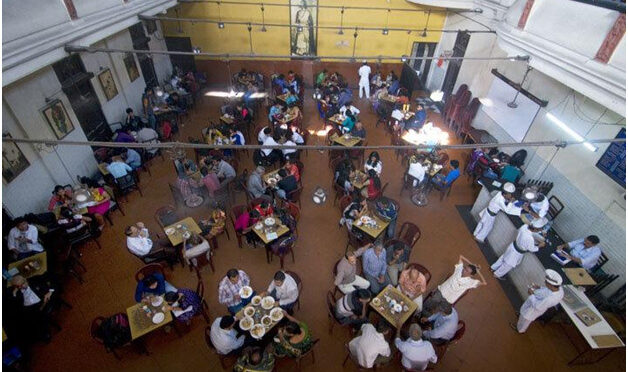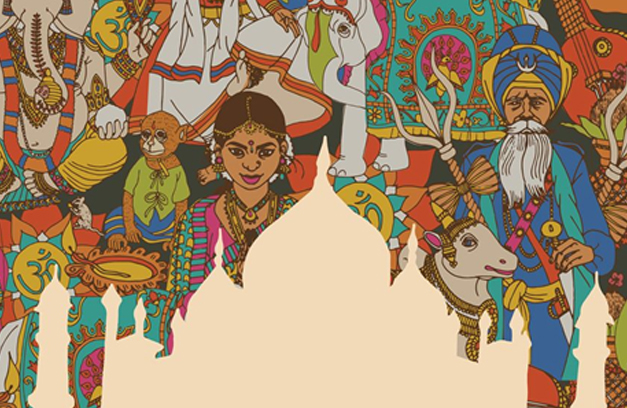Evolution of the Cafe Culture in Kolkata – from Coffee House to Urban Cafes
Posted on : November 9, 2023Author : Preeti Saha

একটা টেবিলে সেই তিন চার ঘন্টা
চারমিনারটা ঠোঁটে জ্বলতো
কখনো বিষ্ণু দে কখনো যামিনী রায়
এই নিয়ে তর্কটা চলতো
রোদ ঝড় বৃষ্টিতে যেখানেই যে থাকুক
কাজ সেরে ঠিক এসে জুটতাম
চারটেতে শুরু হয়ে জমিয়ে আড্ডা মেরে
সাড়ে সাতটায় ঠিক উঠতাম
কফি হাউসের সেই আড্ডাটা আজ আর নেই
আজ আর নেই
কোথায় হারিয়ে গেল সোনালী বিকেলগুলো সেই
আজ আর নেই…
Manna Dey’s masterpiece evokes nostalgia in every Bengali and makes us contemplate the changes that have come about in the cafe culture of Kolkata. It further seeks answers to why the same have occurred over time. Sociability in public spheres has a long history. The early sixteenth century saw the rise of the first coffee houses in Mecca and Cairo where ‘intoxicant coffee’ and various other forbidden things were served. It was from there that the coffee houses spread to the Western Europe via the Ottoman Empire and Turkey. Thus, the emergence and development of coffee houses in Britain and France in the late eighteenth and nineteenth century Europe has been pointed out by Jurgan Habermas as a model of what he called the ‘bourgeois public sphere’. These coffee houses provided a neutral social space between the private interests of everyday life in civil society and the realm of state power.
In the Indian context and with special attention to colonial Bengal, we are acquainted with the existence of neighborhood tea stalls as spaces of informal social interaction, somewhat similar to Habermas’ public sphere. These tea stalls however were mostly populated by men and thus provided for a very masculine public sphere. Adda is a task often associated with the Bengalis. It is a mental exercise where we talk not just about ourselves or our families but try to rise beyond the everyday that is imminent. Although its origins are murky, it can be traced back to colonial Bengal. With Calcutta being the seat of East India Company’s Government and the second capital of the British empire and housing the most important port in British India, this city attracted rich merchants and traders, and students willing to get access to Western Education. These newcomers often involved themselves in social practices like adda to cope up with the ways of the city and gain a foothold.
Coffee was originally never a popular beverage among the Indians. Although produced in South India under the colonials, coffee was mostly exported. Following the collapse of the export market due to the Depression of 1929, the Cess Committee decided to launch the chain of coffee houses across India in order to create a market for potential coffee customers at home. The Indian Coffee House was a pan-Indian initiative with the first Coffee House being opened in Bombay in 1936. None of the buildings where the coffee houses were set up were constructed anew. These buildings which had been constructed for different purposes earlier were purchased by the committee at strategic locations and then converted into coffee houses. Similar was the experience in Calcutta where the Albert Hall in College Street, originally a lecture hall, was transformed into the Indian Coffee House. The walls of the Albert Hall have been witness to the first meeting of the Indian Association (precursor of INC) in 1876 and to the presence of many nationalist leaders. So, leasing this hall also enabled the government to curb nationalist activities.
In order to attract customers, coffee was sold at a lower price than tea in the coffee houses and demonstrations were given on how to brew a cup of coffee. While it was not possible to spend a long time over tea in the nearby restaurants in Calcutta (like Putiram or Dilkhusha Cabin), Coffee House provided a warm ambience for adda, a place where one could pass ample time with just one cup of coffee. Ordering food was not necessary. In this way Coffee House became the ideal space of adda especially for the students and the unemployed. The experience of being served by liveried waiters wearing white starched trousers and white shirts secured with a belt and a fan-tailed turban on the head attracted the city-dwellers to the Indian Coffee House. The whiteness of the uniform also imbued a sense of hygiene among the buyers. The uniformed waiters of the coffee house still continue to be a part of the heritage of the city. Besides, coffee was served with cashew nuts and various exotic eatables like donuts, cold coffee with ice cream, a variety of sandwiches, cakes, soup, etc were available in the coffee house. This unconventional menu enticed the consumers to this new space at the heart of the city. Being served in tea-pots, with sugar and milk kept separately on a tray was a novel experience often associated with the pleasures of Raj, however, at an affordable price. Moreover, for the first time the coffee house provided a space in town, which was devoid of discrimination based on religion, race, caste, class and gender.
In contemporary times, cafes have mushroomed all over Kolkata. Not only the pan-Indian cafes like CCD and Barista, but one can also find small cafes in every other lane in the city. The Indian Coffee House with its paint worn walls and unclean stairways still stands as a testimony of the glorious past. However, the innumerous cafes in its neighborhood have if not replaced but have provided newer spaces for adda to the people of Kolkata. These urban cafes also cater to consumer lifestyles. There has been a rise in launching themed cafes which attracts the netizens. Every second video on our social media feed showcases the aesthetics of budding cafes in the city. Be it Pancham er Adda, a music cafe in memory of the evergreen RD Burman or the Seven Kingdoms Cafe whose interiors have been styled based on the popular web series, the Game of Thrones. In fact, the cafe has a throne just similar to the one in GOT which has become a favorite photo corner of the visitors. Hence, the new age cafes also lay out the perfect instagrammable aesthetics which make them popular among the visitors.
Cafes also come with other perks like a book cafe for bibliophiles or a pet cafe where you can bring your own pets or just visit to spend some time with other pets after a tiring day. Some cafes in the city also come with live music performances. Open wifi access to customers has become usual in urban cafes which is why people often choose to work from cafes in the work from home era. The Artsy Cafe in Minto Park or the Lighthouse Cafe near Lake Gardens might be the best spots to work given their beautiful, well-lit ambience, good food and a variety of tea/coffee. Just like the Coffee House had gained popularity because of its exotic eatables, the new age cafes also offer a well-curated menu of cuisines from all over the world. It thus gives its customers the taste of the foods which they see on their smartphones due to the global information boom. These cafes also update themselves with the change in events and offer new menus and sometimes discounts on occasions like Durga Puja or Eid or the New Year. However, these cafes are more expensive than the Indian Coffee House. But with increase in disposable incomes of families, these urban cafes have become a significant part of the contemporary public sphere. These spaces are non-discriminatory and have kept alive the Bengali culture of adda, having become the brewing point for cultural dialogues and exchanges today.
Bibliography
- Bhattacharya, Bhaswati. 2018. Much Ado over Coffee. Routledge press.
- Habermas, Jurgen and Lennor, Sara. 1964. The Public Sphere – An Encyclopedia Article. New German Critique, No. 3 (Autumn, 1974), pp. 49-55.
- Keller, Douglas. Habermas, the Public Sphere, and Democracy: A Critical Intervention.
Web references
Last Accessed on – 26.02.2023 at 13:00 hours
Last Accessed on – 26.02.2023 at 13:06 hours
Preeti Saha
Intern AGA





Leave a Reply